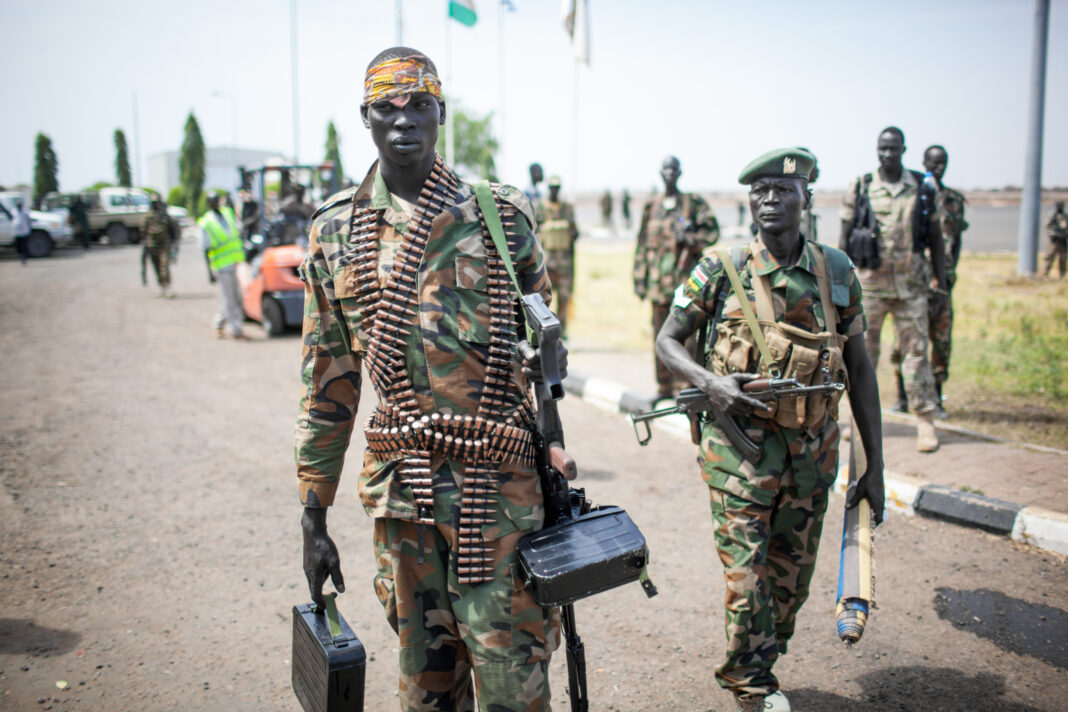by Ambra Visentin
One year on from the start of the latest civil war in Sudan, an international humanitarian conference in Paris recently pledged more than two billion euros in aid for the north-east African country. The country has been torn apart by decades of civil war. Of these, the armed conflict in Darfur, which began in 2003, has received the most media attention because of the severe humanitarian crisis it has caused in the region. The presence of numerous militias, warlords and a 30-year dictatorship prevented the creation of a centralised state. Dictator Omar al-Bashir’s ouster in 2019 led to the Transitional Framework Agreement aimed at establishing a democratic regime. The leadership struggle between the army chief and his deputy led to the outbreak of heavy fighting.
The latest escalation
At the end of 2018, a popular revolution brought an end to the 30-year rule of Omar al-Bashir, who had been leading the country since 1989. At the end of 2019, despite civilian pressure for regime change and massive protests, al-Bashir was deposed in a coup staged by an alliance between the head of the regular army, Abdel-Fattah Al-Burhan (SAF), and paramilitary forces (RSF) commanded by Mohamed Hamdan Dagalo, known as ‘Hamedti’. The rebels reached a fragile power-sharing agreement with the military. For the next two years, the country was governed by this highly unstable alliance, with the civilian government overseen by Burhan, once a close ally of Bashir and the military commander in charge of his criminal campaigns in Darfur. Burhan chaired the Transitional Military Council, a body set up to oversee Sudan’s transition to a democratic regime. However, as the deadline for the handover to civilian rule approached, Burhan staged a coup in October 2021, overthrowing the civilian Prime Minister Abdalla Hamdok and jeopardising the country’s democratic transition.
Under Bashir’s government, Hemedti also enjoyed a strong position of power. Born into a family of camel herders far from the capital, Hemedti rose through the ranks to become the leader of the militia that later became the RSF. In December 2022, an agreement leading to a civilian administration in exchange for economic aid from the international community was reached after intense international pressure. One of the conditions was the dissolution of the RSF. It was to be integrated into the army under a single command. Hemedti opposed this for fear of losing power.
Alliances
The two leaders are now vying for political leadership and economic control of the country. Burhan has signed normalisation agreements with Israel and maintained diplomatic relations with Egypt and the Gulf states, pursuing a foreign policy of engagement with the United States, the country’s main aid donor. Hamedti, on the other hand, has pursued an independent agenda, forging alliances with rebel groups in Darfur, South Kordofan and the Wagner mercenaries – after promising the Russians a concession for a naval base on the Red Sea – and building a vast economic empire based on the gold trade and oil extraction.
More than 10 million people displaced
Fighting in the new conflict has long since spread from the streets of Sudan’s capital, Khartoum, to the western region of Darfur, where a civil war between 2003 and 2008 claimed 300,000 lives, according to UN estimates, and where some two million people have fled the violence. The war has left some 15,000 dead, many of them civilians. There are about 10.7 million displaced Sudanese, the highest number in the world, of whom more than two million have sought refuge in neighbouring countries. 50% of the children, at least 14 million, are in need of humanitarian aid. Humanitarian work is becoming increasingly difficult, NGOs say.
In a note, Médecins Sans Frontières claims that “Sudan is facing one of the worst world crises in decades, a colossal man-made disaster.” Emergency reports that Khartoum is a ghost town and that Port Sudan now looks like a vast refugee camp. The Red Sea city is home to more than 500,000 displaced people, including many members of the local church who have fled the capital.
Cover image by punghi on Shutterstock
Related articles:
























